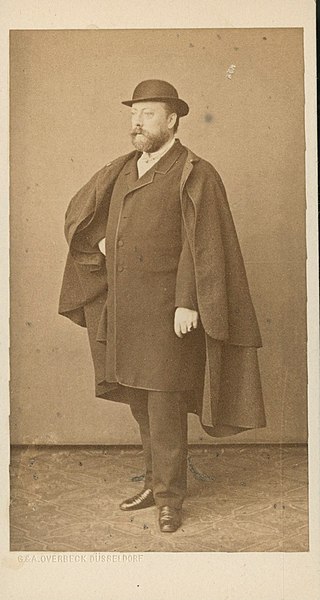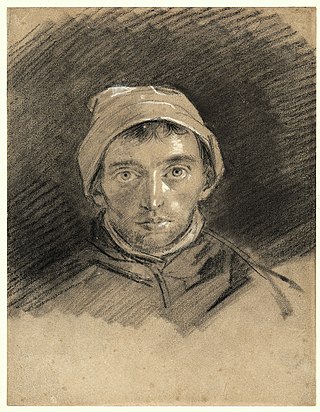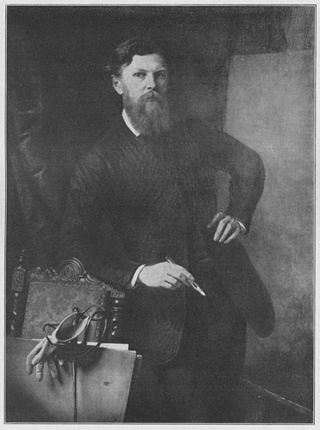This article needs additional citations for verification .(November 2019) |


Wilhelm August Leopold Christian Krause (27 February 1803, Dessau - 8 January 1864, Berlin) was a German landscape and marine painter.
This article needs additional citations for verification .(November 2019) |


Wilhelm August Leopold Christian Krause (27 February 1803, Dessau - 8 January 1864, Berlin) was a German landscape and marine painter.
He received his initial lessons in art from Carl Wilhelm Kolbe, who was sufficiently impressed by his talent that he helped him obtain a Ducal Scholarship; enabling him to study at the Dresden Academy of Fine Arts, beginning in 1821. He remained there for three years, while attempting to become a private student of Caspar David Friedrich. Those efforts were in vain so, in 1824, he relocated to Berlin, where he found employment with the stage designer and diorama painter, Karl Wilhelm Gropius. Later, he became a student of Karl Wilhelm Wach. During this time, he supported himself by singing at the Königsstädtisches Theater. By 1830, he was earning enough from his painting to devote himself to it exclusively.
He had decided to specialize in marine painting, but he always put some landscaping in the foreground. Several study trips to the sea were taken for inspiration. In 1830, he travelled with his friend, Rudolf Jordan, to Rügen. He also travelled to Norway (1831), Holland (1834) and Normandy (1836). He wandered further afield, to England and Scotland, in 1842. Later he undertook study trips to coasts of France, Italy and Greece.
He was the first to introduce marine painting to Berlin and attracted a group of followers there; notably Hermann Eschke, Eduard Hildebrandt, Charles Hoguet and Fritz Bamberger.
In 1833, the Prussian Academy of Sciences accepted him as a full member. he published a book in 1846: Painting Techniques of the Masters of the 15th to 18th Century, rediscovered by Prof. Wilhelm Krause in Berlin. [1]

Andreas Achenbach was a German landscape and seascape painter in the Romantic style. He is considered to be one of the founders of the Düsseldorf School. His brother, Oswald, was also a well known landscape painter. Together, based on their initials, they were known as the "Alpha and Omega" of landscape painters.

Oswald Achenbach was a German painter associated with the Düsseldorf school of painting. Though little known today, during his lifetime he was counted among the most important landscape painters of Europe. Through his teaching activities, he influenced the Kunstakademie Düsseldorf. His brother, Andreas Achenbach, who was twelve years older, was also among the most important German landscape painters of the 19th century. The two brothers were humorously called "the A and O of Landscapes".
The Düsseldorf School of painting is a term referring to a group of painters who taught or studied at the Düsseldorf Academy roughly between 1819 and 1918, first directed by the painter Wilhelm von Schadow.

Hans Fredrik Gude was a Norwegian romanticist painter and is considered along with Johan Christian Dahl to be one of Norway's foremost landscape painters. He has been called a mainstay of Norwegian National Romanticism. He is associated with the Düsseldorf school of painting.

Karl Friedrich Lessing was a German historical and landscape painter, grandnephew of Gotthold Ephraim Lessing and one of the main exponents of the Düsseldorf school of painting.

Otto Magnus Freiherr von Stackelberg was a Baltic German, Imperial Russian archaeologist, as well as a writer, painter and art historian.

Carl Eduard Ferdinand Blechen was a German landscape painter and a professor at the Academy of Arts, Berlin. His distinctive style was characteristic of the Romantic ideals of natural beauty.

Karl Wilhelm Wach was a German painter.

The Alter Südfriedhof also known as "Alter Südlicher Friedhof" is a cemetery in Munich, Germany. It was founded by Duke Albrecht V as a plague cemetery in 1563 about half a kilometer south of the Sendlinger Gate between Thalkirchner and Pestalozzistraße.

Ludwig von Hagn was a German genre painter.

Franz Krüger, known as Pferde-Krüger ("Horse-Krüger"), was a German (Prussian) painter and lithographer. He was best known for his romantic and lively portraits and pictures of horses, which made him the most in demand military and portrait painter in Berlin. His paintings of military parades and hundreds of portraits led to him painting many of the "well to do" of the city.

Ferdinand von Wright was a Finnish painter - He is best known for his landscapes and animal paintings, especially his detailed depictions of birds, but he also created still-lifes and portraits.

Maximilian Joseph Haushofer was a German landscape painter and professor of landscape painting at the Prague Academy of Fine Arts.

Ernst Wilhelm Hildebrand was a German painter. Many art websites mistakenly identify him as "Swiss".

Carl Wilhelm Götzloff was a German painter.

Hermann Wilhelm Benjamin Eschke was a German painter who specialized in marine art.

Hermann Baisch was a German painter and illustrator who specialized in landscapes and animals. He was one of the first artists in Germany to work in the French influenced "paysage intime" style.

Count Stanislaus Friedrich Ludwig von Kalckreuth was a German painter who specialized in mountain landscapes.

Louis Kolitz was a German painter who worked in a wide variety of genres, including history painting, military art, portraits, landscapes and vedute. For many years, he served as Director of the Kunsthochschule Kassel.

Karl Michael Haider (1846–1912), was a Bavarian landscape and portrait painter.